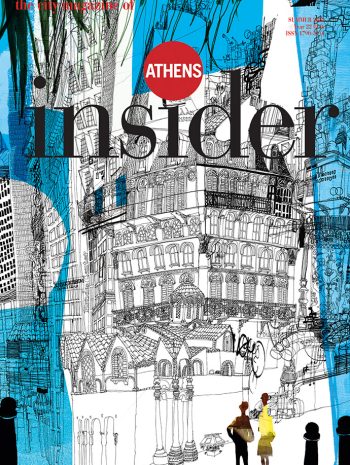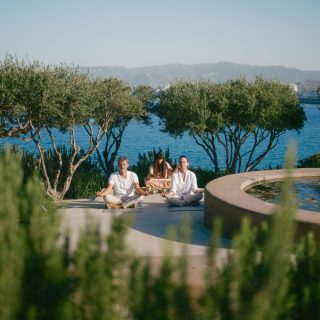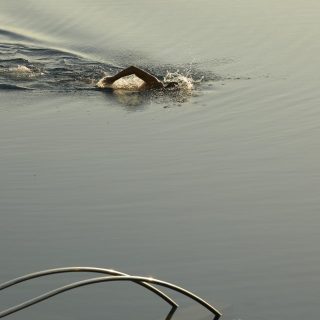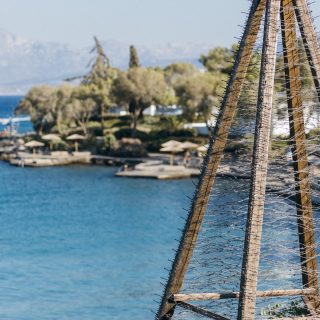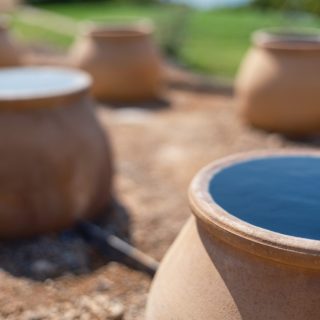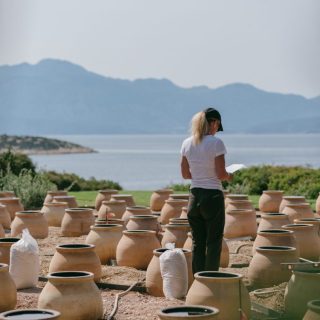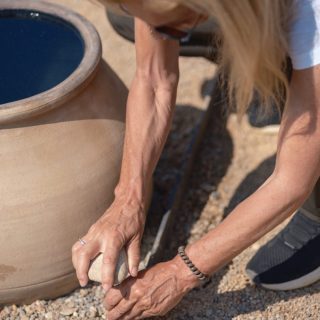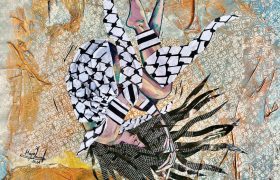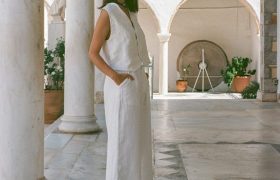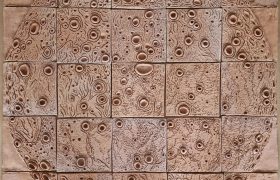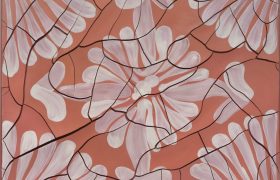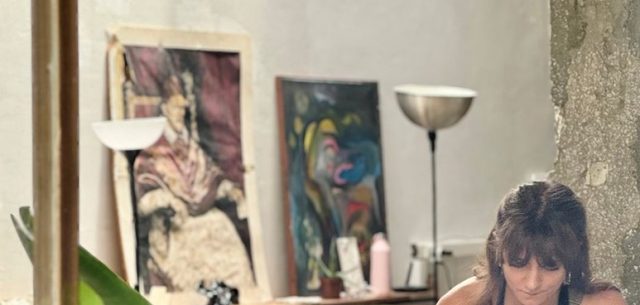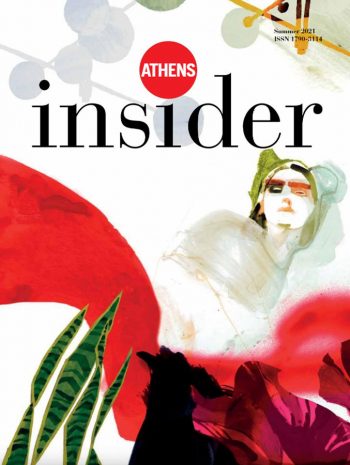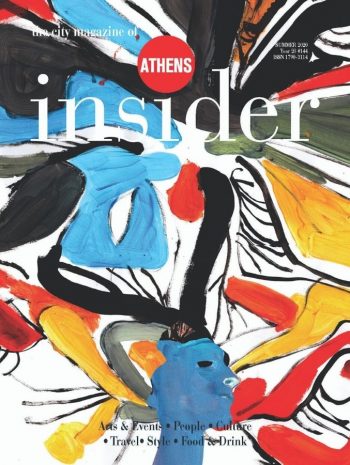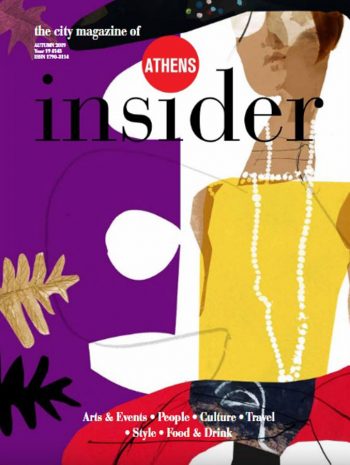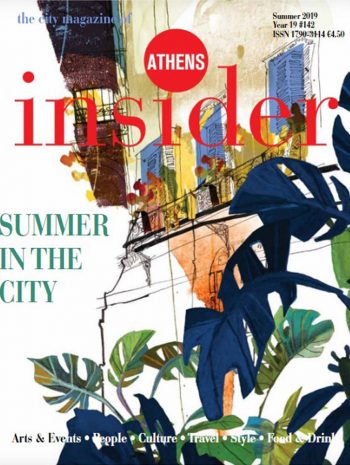Eyes on the Prize – The G & A Mamidakis Foundation Art Prize in Crete
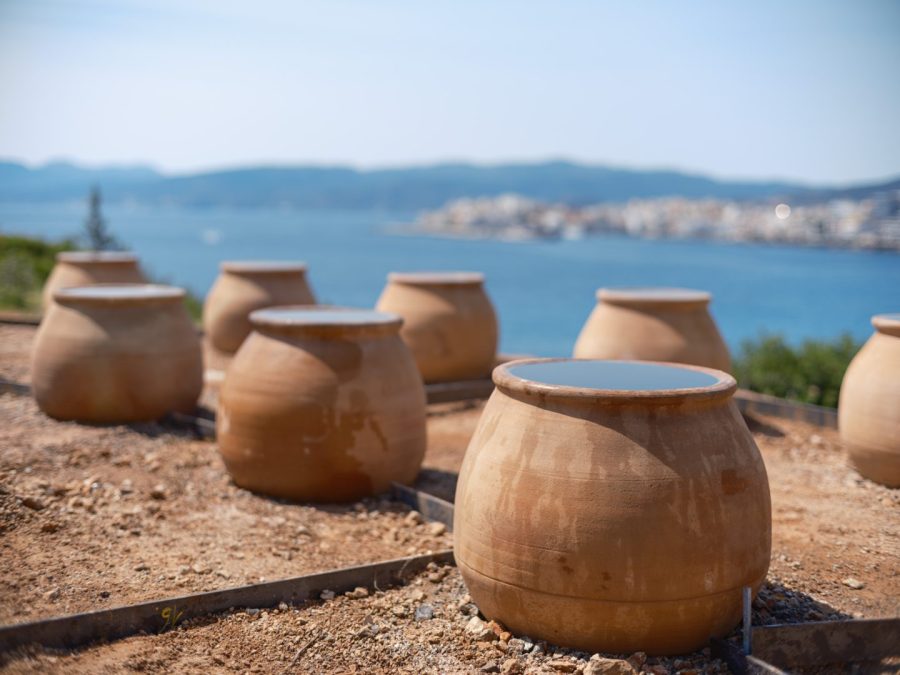
Tom Hall went to Agios Nikolaos in Crete to see the launch of the G & A Mamidakis Foundation Art Prize with Danae Stratou and found a magical world where the boundary between gallery and hotel is wonderfully blurred.
Time spent at the Minos Beach Art Hotel and the recently renovated Minos Palace Resort, across the sparkling Mirabello Bay, has a wonderfully dissociating effect. Art is everywhere; by the pool, in the restaurants, in the gardens, in the rooms and corridors, even submerged in the shallow water of the bay. After a short while, as the relaxation starts to flow lazily through your veins and the blues of the sea and sky begin to merge, you start to feel that the world is a gallery and we are all artists, curators and participants, depending on the time of day and the position of the sun. This is a testament to the work of Gina Mamidakis and her impeccable coven of experience-whisperers at the G. & A. Mamidakis Art Foundation. These art lovers are such expert and sensitive collectors and curators as to give all the rest of us a feeling of collaboration just by being there. The team founded the G. & A. Mamidakis Foundation Art Prize in 2019 as a culmination of the Foundation’s thirty-year long effort to strengthen and promote leadership and innovation in the visual arts and it has quickly grown into a respected and anticipated entry in the arts calendar. In keeping with the general interest in unboundariedness, the hotels are adorned with more than 70 artworks by emerging and renowned Greek and international artists, as well as the work of the previous winners’s site-specific installations and blur the lines between gallery and hotel, guest and participant so much so that while I was contemplating Alexandros Laios’s meditation on the hours in the day, Day, I briefly wondered if the fire station with bright red spade and helmet was part of the work. And I mean this as a true compliment. Outside my room and stretching the length of the corridor was the mesmerising origami wings of one of the 2023’s prize winners, Ami Yamasaki and her work, Whispers travel and whisper to you again. The work is made up of hundreds of thousands of individually folded sheets of fine Japanese paper, lovingly transported by the artist instead of the more usual holiday luggage. The work was initially presented as part of an audio piece as Yamasaki interpreted the city sounds of Tokyo alongside with the birdsong of Agios Nikolaos in Crete. The piece, which captivates and changes at multiple different scales and angles, changing with the view, took me back to the parks of Hiroshima and the thousands of poignant and beautiful paper cranes in strings that wrinkle the edges of that beautiful city’s public spaces. The corridors of the hotel have further wonders to reveal from Maro Fasouli’s Nomadic Murals exploring the intersection of tradition and technology in the art of weaving to Stratis Tavlaridis’ Long Waves, an installation of hand-made paper with intricate patterns cut out of it. Both of these remarkable large scale pieces hypnotise and challenge and further the mission to challenge the idea of where and how art is commissioned and displayed.
Given the social, ecological and technological tumult surrounding us in 2025, the Art Prize winner this year couldn’t have been more perfectly cast or the work more perfectly conceived and executed. Danae Stratou, a pioneering figure in the world of land art, has been exploring, as well as exploding, boundaries over a storied and important career. Her 1997 work, Desert Breath, created in the eastern Sahara in El Gouna, Egypt, is a landmark in Greek contemporary artistic expression and one of the most important examples of land art worldwide. The piece comprised 178 sand formations, half raised and half recessed, with a pool at the centre that eventually, and intentionally, evaporated. Virtuous Spiral, her installation at the Minos Palace Resort in Agios Nikolaos, continues to explore these themes, more relevant now than ever, and to explore the intersections of her artistic practice around boundaries, ecology, transition and the relationship between internal and external lives. The work manages the delicate trick of being both timeless and of its time. It makes good on the briefed-in pre-requisites of both site-specificity as well as local materiality by drawing on the Phaistos Disk and by calling on the globally renowned skills of the potters of nearby Thrapsanos. The vessels, or vases, or urns, each term is relevant and brings with it more meaning, were part of a large commission for a larger piece, made by a local Cretan potter, Mihalis, who Stratou refers to now as family and who attended the launch. The original piece, Upon the Earth, Under the Clouds featured 1,200 of the vessels and was installed at Elefsina. The reuse and recycling of the objects is a key element of this new work, alluding both to ancient efficiencies as well as modern wastefulness. The configuration of the piece alludes to the Phaistos Disk, found in Crete in 1908. This, nearly 4,000 year old artifact, which has a good claim to being the first example of blind printing using moveable type, continues to resist deciphering and the mystery of the original brings further layers of elusive, and illusory, meaning to the piece here. From a personal point of view, and as someone who was experiencing familial changes while I viewed the piece, what struck me most was the sense of Stratou as having conjured a powerful liminal space into the timeless landscape which allows the viewer to perceive the world, and even their world as upside down and, in some way, remade. The black sealant in the pots, which makes the reservoir of water reflective, paradoxically amplifies the blue of the Aegean sky, creating a spiral of little new atmospheres for the viewer to populate with hopes for the one that is in turmoil around us. Her ability to create relevant, meaningful and undeniably beautiful large scale public works, in the traditionally masculine world of land art, make her the perfect recipient of the prize. Given that she won from a field of over 600 entries from 67 countries goes to show the international standing of the G. & A. Mamidakis Art Foundation Prize, as well as her importance today. The name of the piece, Virtuous Spiral, is in the end, a cry for positivity and hope in a world that is only too easily viewed through the red hue of forest fire and artillery smoke. With this moving work the artist makes it clear that the virtuous spiral of modern society, of the ailing planet, of our dangerous and fractious borders, needs a positive and intentional input from everyone of us. Afterall, we need to kick start the positive spiral.
For Greek professionals, researchers, and practitioners working at the intersection of art, science, and technology the G & A Mamidakis Foundation is running the fourth edition of its annual residency programmes, taking place from 18–26 October 2025 in Agios Nikolaos, Crete. This year’s residency explores how collaboration across Art, Science, and Technology (AST) can foster new ways of thinking, creating, and engaging with urgent contemporary challenges.
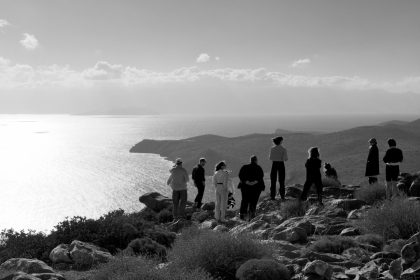
The new Open Call for Art Prize 2026 will be out late September-beginning of October, 2025. The Art Prize supports contemporary artists by offering them the opportunity to create a new, site-specific artwork which will remain on permanent display in Agios Nikolaos, Crete, will become part of the Foundation’s art collection, and will join an important cultural heritage as well. The Art Prize invites Greek and international artists to apply and will be open to visual artists working in a broad range of fields.
G. & A. Mamidakis Foundation – Here
Info – admin@gnamamidakisfoundation.org
Phone – +30 215 500 7712
Minos Beach Art Hotel – Here
Address – Akti Il. Sotirchou, 72100, Ag.Nikolaos, Lasithi, Crete, Greece
Info – info-minos@bluegr.com
Phone – +30 284 1022345
